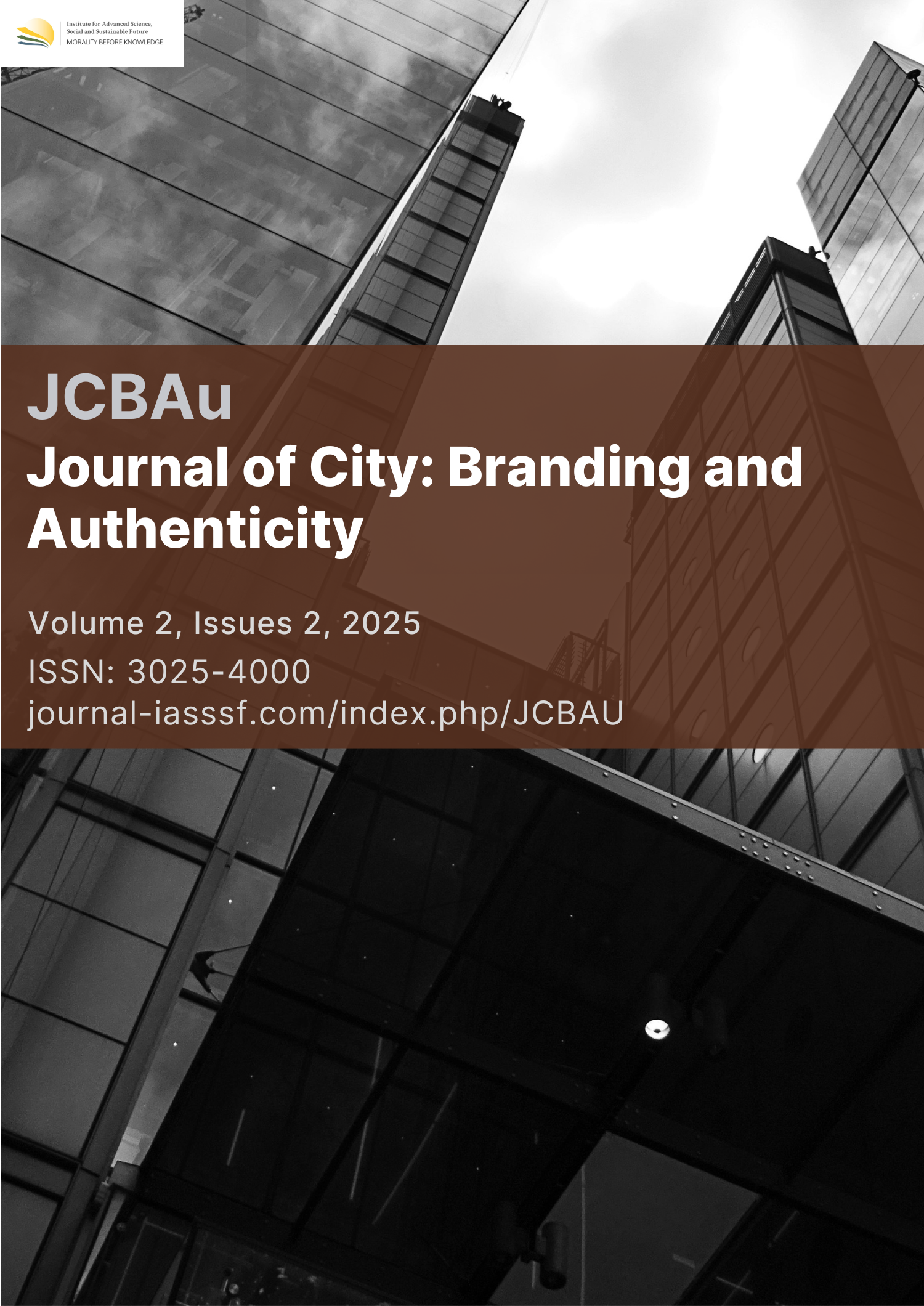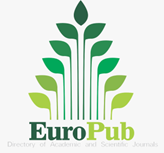Experiencing place identity: A phenomenological study of visitor perception in old Jeddah
DOI:
https://doi.org/10.61511/jcbau.v2i2.2025.1427Keywords:
old Jeddah, place identity, phenomenology, sensory experience, visitor perceptionAbstract
Background: Jeddah (Al-Balad), a UNESCO World Heritage Site, embodies a rich tapestry of cultural and architectural heritage that shapes its unique place identity. Methods: This study explores the phenomenological experience of visitors to Old Jeddah, focusing on how sensory perceptions and spatial interactions contribute to their understanding of place identity. By employing a mixed-method approach combining in-depth interviews and on-site observations, this research uncovers the nuanced ways in which visitors engage with the physical and intangible heritage of Al-Balad. Findings: The findings reveal three primary dimensions of visitor experience that enhance place identity: spatial nostalgia, where historical architecture evokes memories and emotional ties; sensory layering, wherein the interplay of sights, sounds, and smells enriches the cultural narrative; and interactive belonging, where participatory activities, such as heritage tours or artisan workshops, foster a deeper sense of connection. A key novelty lies in demonstrating how these sensory and spatial dimensions collectively form a dynamic and evolving sense of place identity, distinguishing Old Jeddah from other heritage sites. Conclusion: This study contributes to heritage literature by bridging phenomenology and place identity theory, while providing actionable insights for policymakers and conservationists to design visitor-centered interventions that strengthen cultural preservation and engagement. Novelty/Originality of this article: By prioritizing authentic, multisensory experiences, this research highlights the potential of Old Jeddah to remain a living heritage site that resonates across generations.
References
Abd Rahman, N. H., Khalifah, Z., & Ismail, H. N. (2016). The role of sensory experiences in appreciating the cultural heritage attractions. Tourism, Leisure and Global Change, 3, 117-128. https://www.cabidigitallibrary.org/doi/pdf/10.5555/20173155192
Abouhassan, M. (2021). Reviving the Historical Hajj Route in Old Jeddah. In Y. Mahgoub, N. Cavalagli, A. Versaci, H. Bougdah, & M. Serra-Permanyer (Eds.), Cities’ Identity Through Architecture and Arts (pp. 167–182). Springer International Publishing. https://doi.org/10.1007/978-3-030-14869-0_11
Alawi, G., Jamjoum, H., & Samir, H. (2018). Enhancing the cultural tourism experience: The case of historical old Jeddah. WIT Transactions on the Built Environment, 177, 39–50. https://doi.org/10.2495/IHA180041
Angrosino, M. (2007). Doing ethnographic and observational research. Sage.
Atef, B. A., Abdulmohseen, A. S., & Oussamma, J. (2021). Conception and Implementation of Geographical Database for Cultural Heritage Management—Case of Historical Jeddah, KSA. Journal of Geographic Information System. http://www.scirp.org/journal/PaperDownload.aspx?paperID=114081
Badawy, S., & Shehata, A. M. (2018). Sustainable urban heritage conservation strategies—Case study of historic Jeddah districts. In Cities’ identity through architecture and arts (pp. 83–97). Routledge. https://doi.org/10.1201/9781315166551
Bagader, M. (2014). The Old City of Jeddah: From a walled city to a heritage site. WIT Transactions on the Built Environment, 143, 365–374. https://doi.org/10.2495/DSHF140311
Baik, A., Boehm, J., & Robson, S. (2013). Jeddah historical building information modeling" jhbim" old Jeddah–Saudi Arabia. The International Archives of the Photogrammetry, Remote Sensing and Spatial Information Sciences, 40, 73-78. https://doi.org/10.5194/isprsarchives-XL-5-W2-73-2013
Bender, A., Guerreiro, M., Agapito, D., Sequeira, B. D., & Mendes, J. (2024). Sensory experiences in heritage contexts: A qualitative approach. European Journal of Tourism Research, 36, 3604-3604. https://doi.org/10.54055/ejtr.v36i.3060
Braun, V., & Clarke, V. (2006). Using thematic analysis in psychology. Qualitative Research in Psychology, 3(2), 77–101. https://doi.org/10.1191/1478088706qp063oa
Campelo, A. (2018). Immaterial heritage and sense of place. In Cultural Heritage. Routledge. https://doi.org/10.4324/9781315107264
Ciolfi, L. (2012). Place-centred interaction design: Situated participation and co-creation in places of heritage. In M. Ballarin & M. Dalla Mura (Eds.), Museum and design principles: Proceedings of the conference (pp. 57–68). Fondazione di Venezia.
Crouch, D. (2016). The Perpetual Performance and Emergence of Heritage. In Culture, Heritage and Representation. Routledge. https://doi.org/10.4324/9781315258683
Dogan, E., & Kan, M. H. (2020). Bringing Heritage Sites to Life for Visitors: Towards A Conceptual Framework for Immersive Experience. Advances in Hospitality and Tourism Research (AHTR), 8(1), 76–99. https://doi.org/10.30519/ahtr.630783
Elfadaly, A., Shams eldein, A., & Lasaponara, R. (2019). Cultural heritage management using remote sensing data and GIS techniques around the archaeological area of ancient Jeddah in Jeddah City, Saudi Arabia. Sustainability, 12(1), 240. https://doi.org/10.3390/su12010240
Ghazzeh, T. A. (2020). The Character of Old Jeddah and Place Identity: Harmonizing New Developments with the Historic District and the Outlook for the Future. Jordan Journal for History and Archaeology, 14(2). https://archives.ju.edu.jo/index.php/jjha/article/view/106555
Giaccardi, E., & Palen, L. (2008). The Social Production of Heritage through Crossmedia Interaction: Making Place for Placemaking. International Journal of Heritage Studies, 14(3), 281–297. https://doi.org/10.1080/13527250801953827
Ginting, N., & Rahman, N. V. (2016). Preserve Urban Heritage District based on Place Identity. Asian Journal of Environment-Behaviour Studies, 1(1), 67–77. https://doi.org/10.21834/aje-bs.v1i1.145
Greco, C. (2022). Food Heritage, Memory and Cultural Identity in Saudi Arabia: The Case of Jeddah. In S. Stano & A. Bentley (Eds.), Food for Thought, 19, 55–74. Springer International Publishing. https://doi.org/10.1007/978-3-030-81115-0_5
Jelinčić, D. A. (2020). When heritage speaks t-emoticons: Emotional experience design in heritage tourism. In A Research Agenda for Heritage Tourism. Edward Elgar Publishing. https://doi.org/10.4337/9781789903522.00024
Kern-Stähler, A. (2023). English Heritage Gardener-Led Immersive Sensory Tours English Heritage Gardener-Led Immersive Sensory Tours , Down House, Kent, and other locations, June 2023. The Senses and Society, 18(3), 347–351. https://doi.org/10.1080/17458927.2023.2257909
Khan, S. M., Serageldin, I., & El-Sadek, S. (1982). The influence of Arabian tradition on the old city of Jeddah: The urban setting. In The arab city: its character and islamic cultural heritage. Proceedings of a symposium held in medina, Kingdom of Saudi Arabia.
Kvale, S. (2009). Interviews: Learning the craft of qualitative research interviewing. Sage.
Lowenthal, D. (1985). The Past is a Foreign Country. Wiley.
Mochocki, M. (2021). Heritage Sites and Video Games: Questions of Authenticity and Immersion. Games and Culture, 16(8), 951–977. https://doi.org/10.1177/15554120211005369
Moustakas, C. (1994). Phenomenological research methods. Thousand Oaks.
Muntean, R., Hennessy, K., Antle, A., Rowley, S., Wilson, J., & Matkin, B. (2015). ʔeləw̓k̓ʷ–Belongings: Tangible interactions with intangible heritage. Journal of Science and Technology of the Arts, 7(2), 59-69. https://antle.iat.sfu.ca/wp-content/uploads/2018/03/MunteanHennesseyAntle_Citar16_Belongings_sm.pdf
Păcescu, A., & Thiery, V. (2015). Building place identity through heritage. Postmodern Openings, 6(2), 89-101. https://doi.org/10.18662/po/2015.0602.07
Sahahiri, R., Arrowsmith, C., & Alitany, A. A. (2019). Mapping the historical places: A case study of promoting tourism in Jeddah, the Kingdom of Saudi Arabia. Cogent Arts & Humanities, 6(1), 1691315. https://doi.org/10.1080/23311983.2019.1691315
Sampieri, S., & Bagader, M. (2024). Sustainable Tourism Development in Jeddah: Protecting Cultural Heritage While Promoting Travel Destination. Sustainability, 16(21), 9148. https://doi.org/10.3390/su16219148
Smith, L. (2006). Uses of Heritage (1st ed.). Routledge. https://doi.org/10.4324/9780203602263
Trenter, C., Ludvigsson, D., & Stolare, M. (2021). Collective Immersion by Affections. Public History Review, 28, 1–21. https://search.informit.org/doi/pdf/10.3316/informit.923487339659699?download=true
Tuan, Y. F. (1977). Space and place: The perspective of experience. U of Minnesota Press. https://www.eiu.edu/tarble/Yi_Fu_Tuan_Space_and_Place.pdf
VisitSaudia. (n.d.). Historic Jeddah - Al Balad. VisitSaudia. https://www.visitsaudi.com/en/jeddah/attractions/summer-night-adventures-in-al-balad
Downloads
Published
How to Cite
Issue
Section
Citation Check
License
Copyright (c) 2025 Jory AlGhunaim, Irfan Adi Saputra, Ahmad Ridho Rahmani

This work is licensed under a Creative Commons Attribution 4.0 International License.














